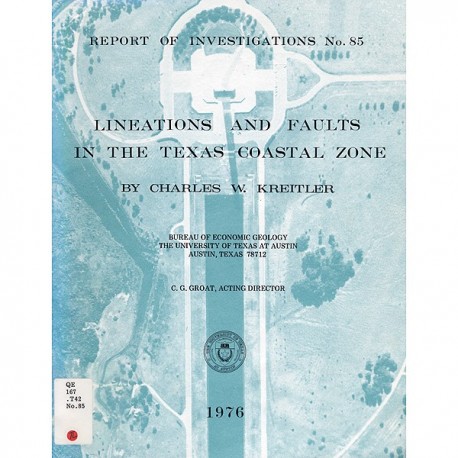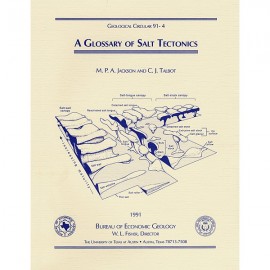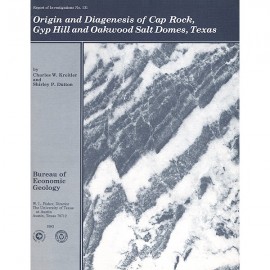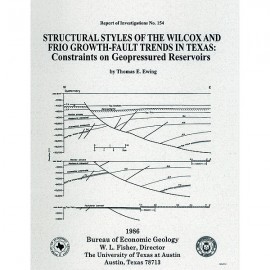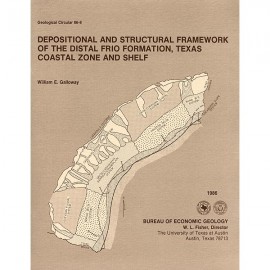Reports of Investigations
-
Books & Reports
- Reports of Investigations
- Guidebooks
- Udden Series
- Geological Circulars
- Down To Earth
- Atlases of Major Oil and Gas Reservoirs
- Texas Memorial Museum Publications
- Environmental Geologic Atlas of the Texas Coastal Zone
- Mineral Resource Circulars
- Other Reports
- Seminars and Workshops
- Handbooks
- Submerged Lands of Texas
- Symposia
- Annual Reports
- Open File Reports
-
Maps & Cross Sections
- Thematic Maps
- Miscellaneous Maps, Charts & Sections
- Geologic Atlas of Texas
- STATEMAP Project Maps
- Geologic Quadrangle Maps
- Cross Sections
- Highway Geology Map
- Energy and Mineral Resource Maps
- Shoreline Change and Other Posters
- Wilcox Group, East Texas, Geological / Hydrological Folios
- Bouguer Gravity Atlas of Texas
- River Basin Regional Studies
- Featured Maps
- Posters
- Teachers & the Public
-
Geological Society Publications
- Gulf Coast Association of Geological Societies
- Alabama Geological Society
- Austin Geological Society
- Corpus Christi Geological Society
- Houston Geological Society
- Lafayette Geological Society
- Mississippi Geological Society
- New Orleans Geological Society
- South Texas Geological Society
- GCS SEPM Publications
- Historic BEG & UT Series
Lineations and Faults in the Texas Coastal Zone
RI0085
Lineations and Faults in the Texas Coastal Zone, by C. W. Kreitler. 32 p., 25 figs., 1976. ISSN: 0082355X: Print Version.
A free, digital version of this publication can be found on: Texas ScholarWorks
RI0085. Lineations and Faults in the Texas Coastal Zone, by C. W. Kreitler. 32 p., 25 figs., 1976. ISSN: 0082355X: Print.
To purchase this publication as a downloadable PDF, please order RI0085D.
ABSTRACT
Over 7,000 miles of lineations have been observed on aerial photographic mosaics of the Texas Coastal Zone. These lineations, in part, represent the surface traces of faults originating in the Tertiary sediments and propagating through the Quaternary sediments. The extrapolation of subsurface faults from specific oil and gas reservoirs are commonly coincident to lineations in those areas. Some extrapolated fault traces weave back and forth across lineations for 10 to 20 miles and then coincide with another lineation and follow it for 20 miles. They also may partially represent fracture-joint systems within the sedimentary deposits of the Gulf basin.
In the Houston-Galveston area of land subsidence, lineations commonly correspond with zones of active faulting. Coincidence of lineations and active faults occurs along the Hockley escarpment and in the complexly faulted Ellington Air Force Base-NASA area. Many lineations coincide with zones of differential subsidence; fifty percent of intersections of subsidence profiles and lineations occur at points of differential subsidence. Differential subsidence may be a precursor to active faulting; the land surface flexes before fault displacement is evident. With increased regional subsidence, active surface faults may be expected to develop within zones of differential subsidence.
Movement on faults in the Houston area is being activated and accelerated by ground-water withdrawal. The rate of fault movement on the Long Point fault and Eureka Heights fault increases and decreases as the piezometric surface rises and declines, respectively.
Land subsidence and fault activation can be expected in areas of the Texas Coastal Zone other than the Houston-Galveston area if in these areas there is extensive ground-water withdrawal from shallow (less than 3,000 ft) fresh-water artesian aquifers. In these areas surface faulting and/or differential subsidence would be expected to occur in part within the zones defined by the lineations.
Keywords: faults, Galveston, Houston, lineations, lineaments, subsidence, Texas, Texas Coastal Zone
Citation
Kreitler, C. W., 1976, Lineations and Faults in the Texas Coastal Zone: The University of Texas at Austin, Bureau of Economic Geology, Report of Investigations No. 85, 32 p.
